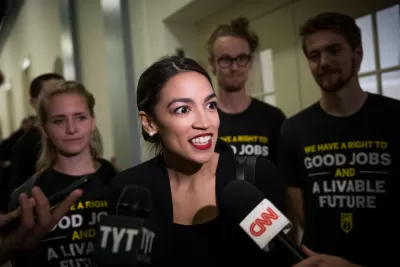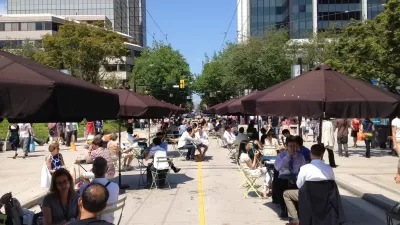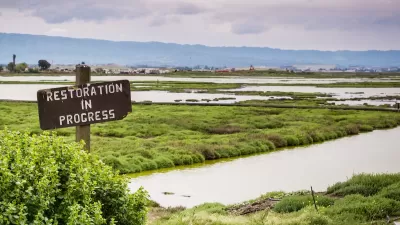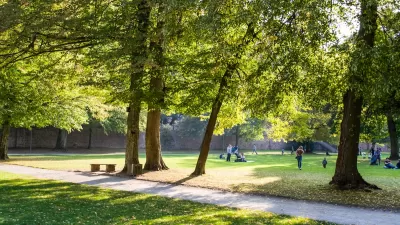If it emulated and adapted the scope of its predecessor, the Green New Deal could transform the country in fundamental ways, with builders, planners, and architects playing central roles.

Two futures may be in store for the country, Kelsey Campbell-Dollaghan writes. "Escalating storms, floods, droughts, mass migration, food scarcity, and economic instability could dramatically alter the physical landscape and economy." Or, more optimistically, "A national effort to retrofit millions of buildings and rethink the way communities are designed could help Americans withstand the ravages of climate change and make the country more equitable."
Discussing issues of bureaucratic reform, land use, architecture, labor, and equity, Campbell-Dollaghan outlines what it might take to implement the Green New Deal. That includes environmental retrofits for "tens of millions of houses and apartment buildings," an endeavor that would employ an immense workforce and necessitate a lot more federal oversight of local affairs.
The Green New Deal also bakes in an explicit focus on equity, with consequences for housing affordability and the workforce. "A renovation program on this scale could have many unintended effects" on vulnerable populations that policymakers would need to address.
Campbell-Dollaghan also discusses how the Green New Deal could truly engage architects and designers in the oft-talked about project of sustainable, equitable development. "The resolution poses an opportunity for architects and designers to reclaim their relevance to society, not as service providers for wealthy clients but as vocal leaders on major issues in the built world, like social justice and climate change."
FULL STORY: The Green New Deal could change the way America builds—here’s how

Study: Maui’s Plan to Convert Vacation Rentals to Long-Term Housing Could Cause Nearly $1 Billion Economic Loss
The plan would reduce visitor accommodation by 25,% resulting in 1,900 jobs lost.

North Texas Transit Leaders Tout Benefits of TOD for Growing Region
At a summit focused on transit-oriented development, policymakers discussed how North Texas’ expanded light rail system can serve as a tool for economic growth.

Using Old Oil and Gas Wells for Green Energy Storage
Penn State researchers have found that repurposing abandoned oil and gas wells for geothermal-assisted compressed-air energy storage can boost efficiency, reduce environmental risks, and support clean energy and job transitions.

Private Donations Propel Early Restoration of Palisades Playground
Los Angeles has secured over $1.3 million in private funding to restore the Pacific Palisades playground months ahead of schedule, creating a modern, accessible space that supports community healing after recent wildfires.

From Blight to Benefit: Early Results From California’s Equitable Cleanup Program
The Equitable Community Revitalization Grant (ECRG) program is reshaping brownfield redevelopment by prioritizing projects in low-income and environmental justice communities, emphasizing equity, transparency, and community benefits.

Planting Relief: Tackling Las Vegas Heat One Tree at a Time
Nevada Plants, a Las Vegas-based nonprofit, is combating the city’s extreme urban heat by giving away trees to residents in underserved neighborhoods, promoting shade, sustainability, and community health.
Urban Design for Planners 1: Software Tools
This six-course series explores essential urban design concepts using open source software and equips planners with the tools they need to participate fully in the urban design process.
Planning for Universal Design
Learn the tools for implementing Universal Design in planning regulations.
Ascent Environmental
Borough of Carlisle
Institute for Housing and Urban Development Studies (IHS)
City of Grandview
Harvard GSD Executive Education
Toledo-Lucas County Plan Commissions
Salt Lake City
NYU Wagner Graduate School of Public Service





























